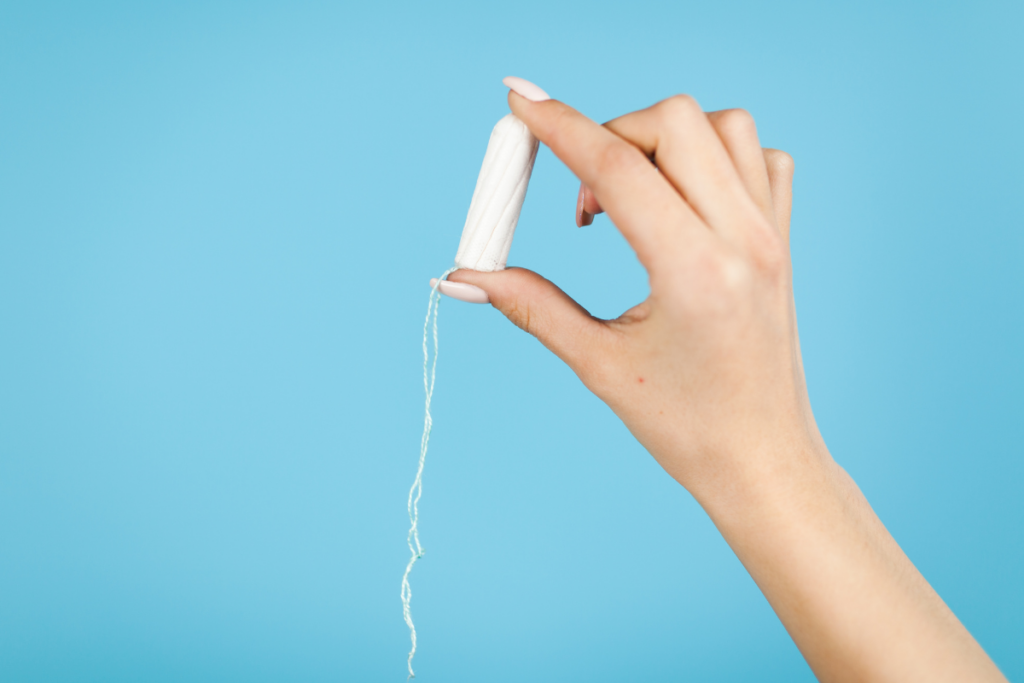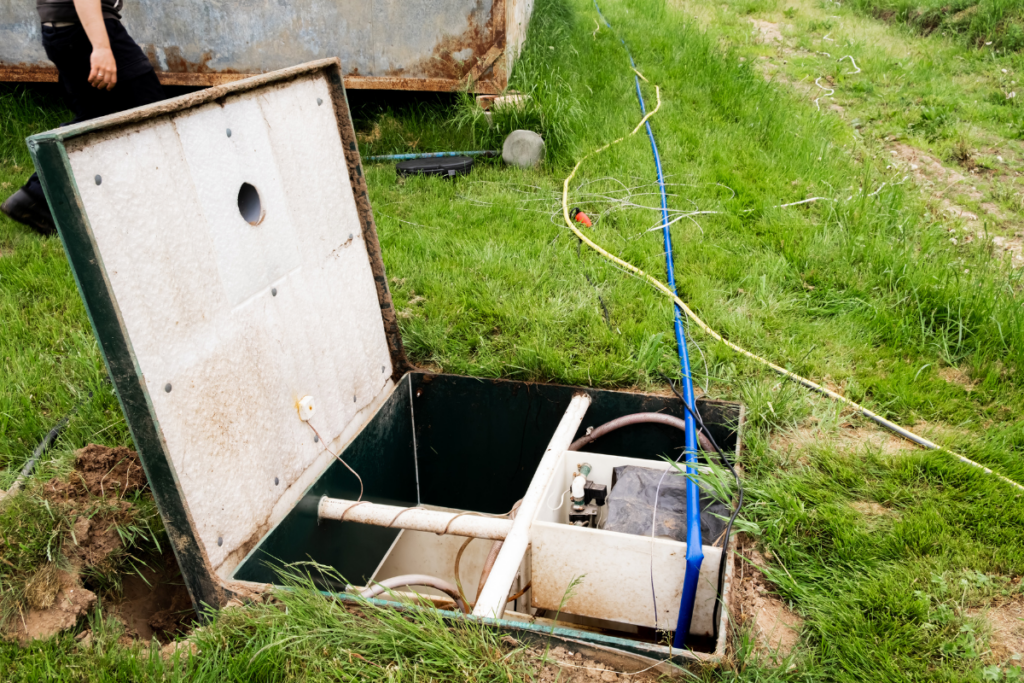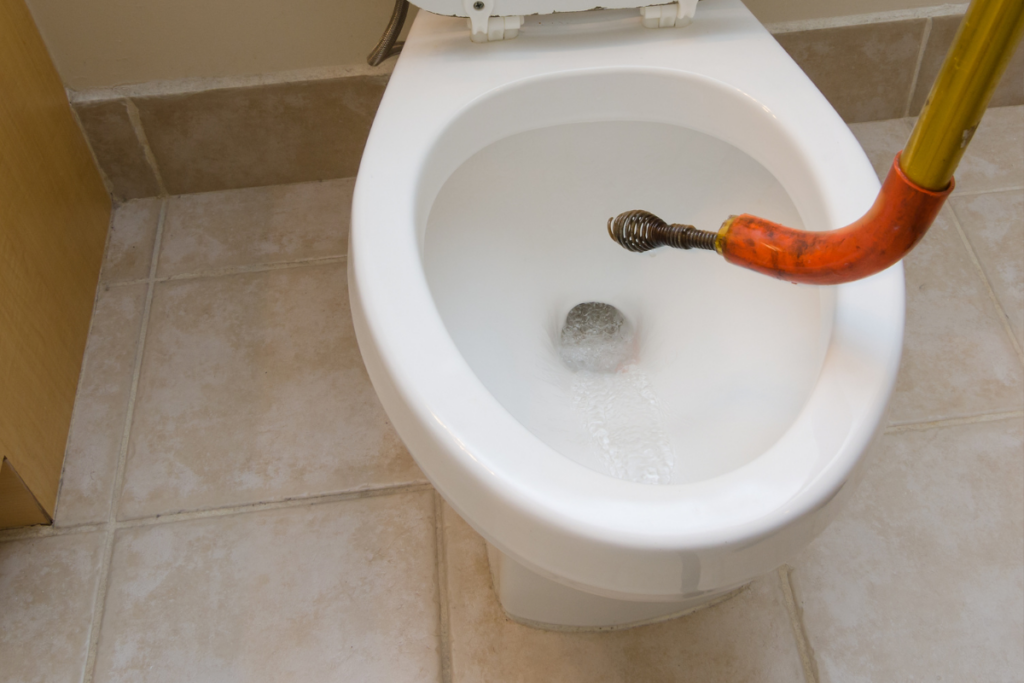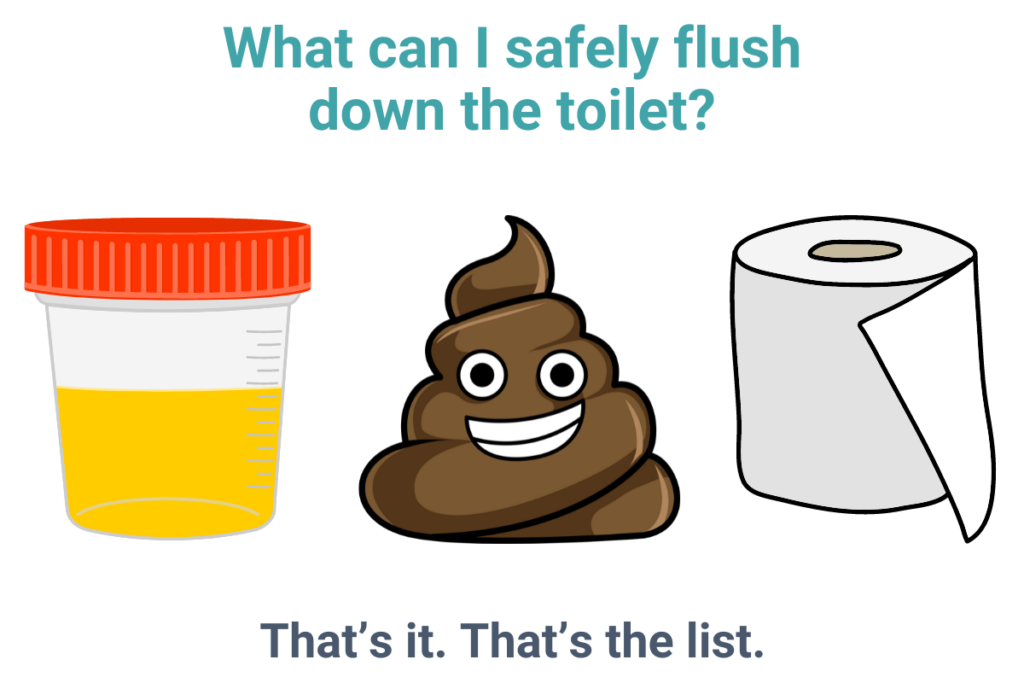I Accidentally Flushed a Tampon down the Toilet [Is It Going to Clog?]
Feminine products – specifically tampons and sanitary pads – are designed to absorb extreme amounts of liquid for their size, meaning they cannot be disposed of in the toilet. So what happens if you accidentally flush a tampon down the toilet?
If you accidentally flush a tampon down the toilet, you can remove it with an auger or pour a bucket of water down the toilet to push the tampon into the drain. Alternatively, remove your toilet, find and remove the tampon with tongs or a plumber’s snake then reinstall it. While you may not experience a clog the first time you flush a tampon, even one is capable of clogging your waste line.
Keep reading to find out exactly why you should never flush a tampon down the toilet, and what you can do if you accidentally already did.
Can you flush a tampon down the toilet?
Tampons are a necessity for most women, although the very thing that makes them indispensable also means they can wreck your home’s plumbing.
Tampons cannot be flushed down the toilet because they do not disintegrate like toilet paper and they swell when they absorb fluids. Together, this means that a previously small tampon can increase in size and cause a blockage in your waste line that will not go away on its own.

If you do flush a tampon down the toilet, you may not see an immediate effect. Especially if you’re on a municipal sewer system, although the tampon is sure to clog the sewage system down the line. If, however, you are on septic, it will take up space and mean your system needs to be pumped sooner than scheduled.
Tampons should always be disposed of by wrapping them in toilet paper and placing them in the trash can.
As a rule, only human waste and toilet paper should be flushed down the toilet.
What happens if you accidentally flush a tampon in the toilet?
Tampons are small enough to potentially go down your toilet without creating a blockage, but they are capable of creating major – and costly – problems when flushed.
Tampons are ultra-absorbent and expand when they come into contact with fluids. They stay in one piece inside your body for approximately eight hours – meaning they won’t disintegrate into smaller pieces like tissue paper does as it passes through your pipes.
Tampons cause long-term clogs in public sewer systems and can even contribute to environmental damage.
What happens if you accidentally flush a tampon down a septic tank?
Depending on the location of your home, your wastewater will go through either the local sewage system or into your home’s septic tank.
Typically, apartment buildings, neighborhoods, and homes located within the city limits are connected to a central sewage system, whereas houses that are built away from the city center are likely to use a septic tank.
All the wastewater from your home drains into the septic tank, which holds the water until the solids settle and the liquids exit into the drain field and are absorbed into the soil. Additional solids, including tampons, can build up in the septic tank, limiting its ability to hold and process the waste.

When solids build up in the septic tank, it will need to be pumped. Typically, this should be done every 3-5 years, but items such as tampons and baby wipes will seriously shorten this time.
What to do if you accidentally clogged your toilet with a tampon
Tampons don’t disintegrate easily. This means that if it gets stuck on the way down the drain, it will not dissolve. Instead, the tampon will remain in the pipe, allowing additional material to accumulate around it until you need to hire a plumber to remove the clog.
If you accidentally flushed a tampon down your toilet, use the following methods to fix the problem:
- Pour a bucket of water into the toilet
- Augur the toilet
- Remove the toilet
Unfortunately, if there is a tampon clogging your drain line, you may need to call a plumber.
Pour a bucket of water into the toilet
Unless you’re prepared to go in after it, the best option if you’ve flushed a tampon down the toilet is to try and push it through the pipes before it absorbs too much water.
Fill a large bucket with water and pour it down the toilet. Start slowing and pour the entire bucket into the toilet. This will be more water pressure than simply flushing the toilet could produce and it may be enough to drive the tampon out of the line.
The downside to this method is that it could push the tampon further down the pipe, allowing it to clog out of reach. It will also not remove the tampon from the larger sewer or septic system.
Augur the toilet
The best way to deal with a flushed tampon is to remove it completely. For this, you’ll need a plumber’s snake (also called a drain augur), a bucket, rubber gloves, and a small trash bag.

To remove a tampon that is clogging your toilet, you should:
- Preparation – Lay old towels around the base of the toilet. This may get messy. You should also have a bucket nearby. Go ahead and put on the rubber gloves.
- Input the augur – Position the augur so that the rubber neck is in the siphon jet with the corkscrew end of the augur down the drain.
- Unwind the augur – Turn the handle clockwise to extend the snake through the drain. Go slowly to avoid damaging the toilet or the pipes.
- Locate the clog – Most toilet augurs are 25 feet long, so it might take a while to find the clog. Continue turning the handle clockwise until it reaches a blockage.
- Prod the clogged tampon – Turn the handle clockwise and counterclockwise a few times. Your goal is to either break up the tampon, allowing it to pass through your pipes, or hook it and bring it back up.
- Pull the augur back in – Slowly turn the handle counterclockwise. Once the tip of the augur comes back up, remove the snagged tampon and put it in the trash bag.
- Flush the toilet – Flush the toilet to push any broken pieces through the line.
Remove the toilet
If flushing the toilet with a bucket of water or running the augur through doesn’t clear the clog, you’ll need to remove the toilet. Keep in mind that this is a difficult process, requiring both time and expertise.
If you don’t feel comfortable attempting the method, it’s time to call a plumber.
With that in mind, you can remove a tampon that has clogged the drain line by doing the following:
- Shut off the water supply to your toilet. Close the water pipes from the toilet or the primary supply valve.
- Flush your toilet and drain the tank to stop water from leaking into the toilet bowl. Failing to do that will cause water to flood your bathroom.
- Remove any remaining water from the bowl. Dry it using an absorbent sponge.
- Remove the bolts holding the toilet to the floor with an adjustable wrench.
- Lift the toilet and move it away from your workspace. This should make you see beyond the trapway.
- Insert your gloved hand into the drain to check for any blockages.
- Use the plumber’s snake to get into the drainpipe; it could be deeper than you expected.
- Extract it with the snake or tongs (not your hands).
- Reassemble the toilet by realigning it.
- Attach the toilet bowl with a new wax ring.
- Secure the toilet bolts.
- Turn the water back on.
Removing the toilet is challenging, and it would be best if you hired a professional to handle it.
If you don’t reinstall it correctly, you risk having problems such as leaks from the base of the toilet, bubbling sounds whenever air escapes through gaps left during the reinstallation, and an imbalanced toilet.
How to tell if a tampon has clogged the toilet
Don’t freak out if you accidentally flush a tampon down the toilet. It’s possible that nothing will happen, but it’s certainly something you’ll need to keep an eye on.
Signs that a flushed tampon has clogged the toilet are:
- Water backing up or pouring from your toilet
- Bubbling sounds coming from the plumbing system
- The odor of raw sewage wafts from the drains
If you experience any of these signs, you’ll need to work promptly to unclog your toilet or call a professional.
Other items that may clog your toilet
As a general rule, only bodily waste and toilet paper should ever be flushed down your toilet.

Items that may clog your toilet if flushed include:
- Absorbent paper items including tissues, napkins, and paper towels
- Wipes either baby wipes or those that are labeled as being “flushable”
- Sanitary pads
- Condoms
- Bandages
- Medication of any kind
- Cigarettes or cigarette butts
- Animal waste including kitty litter
- Kitchen oil or grease
- Small toys
- Hair
Any items that aren’t meant to be flushed can potentially block the drain line, clog up the sewer or septic system, or pose an environmental risk.
Will a toilet eventually unclog itself? Find out which clogs are likely to resolve themselves, and which ones you’ll need to work on.
How to properly dispose of tampons
Tampons should never be flushed down the toilet.
To properly dispose of a tampon, wrap it in toilet paper, tissues, or the exterior wrapper of a replacement tampon and place it in the trash can.
If you’re in a public restroom, put it in the sanitary napkin container.
Organic tampons are biodegradable and can be composted, but they cannot be flushed down the toilet.
Summary of what to do if you flush a tampon down the toilet
Tampons are specifically designed to be highly absorbent and not break down, so when you flush them, they soak up the liquid and swell.
Tampons don’t degrade like toilet paper; they can get trapped in your drain line and create blockages. This might result in a very unpleasant backflow of sewer water into your toilet.
Since it is difficult to remove a clogged tampon, you might need to have your drain fixed by a professional plumber, which can be an expensive endeavor.
Do tampons break down in the toilet?
Unlike toilet paper, tampons do not break down in the toilet.
Most tampons of made of synthetic materials and can take up to 800 years to break down. Even biodegradable organic tampons take about 18 months – that’s much faster, but still longer than you want it in your toilet!
How many tampons does it take to clog a toilet?
A single tampon may block your toilet; just because you’ve flushed a tampon in the past without incident, it doesn’t mean there will never be a problem.
Can one tampon clog a toilet?
You may go years flushing a tampon without clogging your toilet, or one accidentally flushed tampon may expand and block your entire drainage system.
Just one tampon can clog a toilet.
How long does it take for tampons to clog a toilet?
A tampon may clog your toilet immediately if it gets caught in the siphon jet.
It may also take hours for the clog resulting from a flushed tampon to become apparent.
What brand of tampons are flushable?
Some lines of tampons advertise that they are flushable, but this refers specifically to the cardboard applicator, not the tampon itself. To reduce consumer confusion, these tampons are no longer marketed as being flushable.
For example, Tampax Cardboard has no references to being flushable at all.
Can you flush organic tampons in a toilet?
Organic tampons are biodegradable and better for the environment as a whole than their synthetic counterparts; however, they can still cause major plumbing issues in your home if flushed in a toilet.
Can you flush sanitary pads in a toilet?
Like tampons, sanitary pads should never be flushed in a toilet.
Not only are they designed to absorb liquids, they are also much larger than tampons and the general shape makes them even more likely to get hung in your pipes.
Let Us Know How We’re Doing!
Did this expertly prepared resource answer your question?
Do you have another question about home maintenance, home improvement projects, home appliance repair, or something else?
Get more information, send in questions and keep the discussion going by contacting the I’ll Just Fix It Myself company customer service team at at 1-800-928-1490 or Email us at [email protected]
